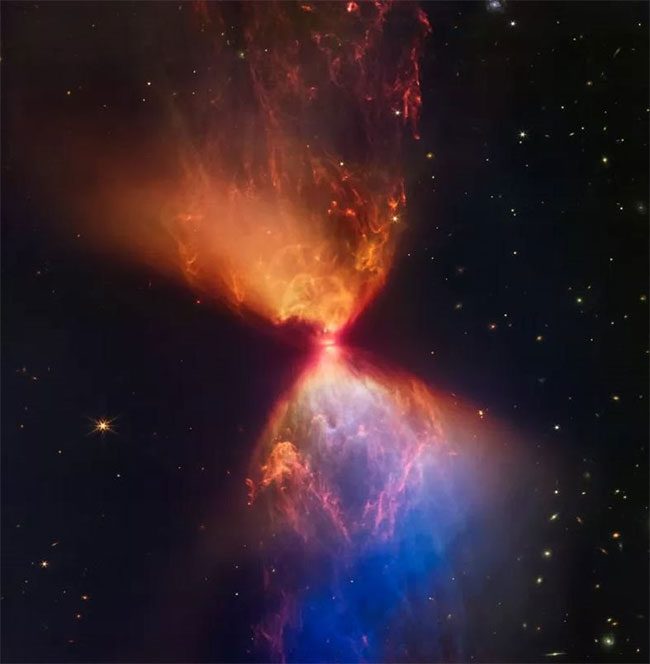The James Webb Space Telescope (JWST) from NASA has captured the “previously hidden” beginnings of a very young star in its quest to explore the first galaxies.
On November 16, NASA released details about the unprecedented features of a protostar named L1527. The near-infrared camera aboard the James Webb Telescope played a crucial role in bringing this image to light.
The photograph of the protostar reveals a shape resembling an “hourglass” seemingly igniting amidst the darkness of space. Under infrared light, clouds of dust that were once invisible have emerged around the area, while at the center of the hourglass lies a young star.

The James Webb Space Telescope has captured the “previously hidden” beginnings of a very young star.
Using the Near Infrared Camera (NIRCam), James Webb was able to penetrate the dark clouds obscuring protostars from previous telescopes, as well as look back in time to observe when the young star was consuming a cloud of material to grow.
Dr. Klaus Pontoppidan, a scientist at the Space Telescope Science Institute based in Baltimore, Maryland, told Newsweek that the blurry images would not have been so clearly defined without infrared light. However, James Webb can penetrate dust much like a thermal camera can see through fog.
The most remarkable feature in the image is the blue and orange clouds created when material is ejected from the protostar and collides with surrounding matter.
“The colors themselves are due to the layers of dust between the James Webb Telescope and the clouds. The blue areas are where the dust is thinnest. The thicker the dust layer, the less blue light escapes, creating orange pockets,” Pontoppidan explained.
According to Pontoppidan, the protostar is approximately 500 light-years away from Earth, which may sound distant, but it is actually one of the closest young stars, representing the average distance at which young systems form. He noted that it is not much different from the shape of the Sun and the solar system about 4.6 billion years ago.
NASA stated that this is a Class 0 protostar, the earliest stage of star formation, estimated to be around 100,000 years old. It is still in the process of developing and accumulating gas, and has not yet reached its final mass. Unlike mature stars, this protostar has not yet generated energy through nuclear fusion, a defining characteristic of stars.
“As the protostar continues to gather mass, its core gradually compresses and approaches stable nuclear fusion. The scene depicted in this image shows L1527 doing just that. The surrounding molecular cloud, made up of dense dust and gas, is being pulled toward the center, where the protostar resides,” according to NASA.
NASA further explained that as this material falls in, it spirals around the central region of the hourglass shape, creating a dense material disk known as a accretion disk—which is what is providing material to the protostar.
“The existence of the protostar has been known for decades due to its brightness, but the limited resolution of previous instruments made it look like a colored dot. The new image provides a window into what our Sun and solar system looked like in their early stages,” NASA stated.
Additionally, the agency noted that the images captured by the James Webb Telescope are ten times sharper than those taken by the Spitzer Space Telescope, which was launched in 2003 and ceased operations in 2020.
“In general, it teaches us about our origins. They act like time machines and allow us to look back in time to see how the universe formed,” NASA concluded.


















































